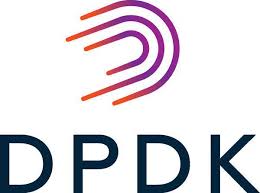Last month I had a change to get a hold of the book “MasteringPython Networking” by Eric Chou from Packt Publishing.
I worked as a software developer for a networking company
writing value-added firmware on top of the hardware based switching and routing
engine. With in-depth knowledge and experience I still find this book very
useful for me.
Below is the table of content and brief summary of the book that I got from the Packt Publishing site:
- Review of TCP/IP Protocol Suite and Python Language
- Low-Level Network Device Interactions
- API and Intent-Driven Networking
- The Python Automation Framework - Ansible Basics
- The Python Automation Framework - Ansible Advance Topic
- Network Security with Python
- Network Monitoring with Python - Part 1
- Network Monitoring with Python - Part 2
- Building Network Web Services with Python
- OpenFlow Basics
- Advanced OpenFlow Topics
- OpenStack, OpenDaylight, and NFV
- Hybrid SDN
What You Will Learn
- Review all the fundamentals of Python and the TCP/IP suite
- Use Python to execute commands when the device does not support the API or programmatic interaction with the device
- Implement automation techniques by integrating Python with Cisco, Juniper, and Arista eAPI
- Integrate Ansible using Python to control Cisco, Juniper, and Arista networks
- Achieve network security with Python
- Build Flask-based web-service APIs with Python
- Construct a Python-based migration plan from a legacy to scalable SDN-based network.
This book is written in a very logical manner covering from
the basics to the more advanced topics. Integrating networking and Python
automation into one and to show the reader how to build a lab environment to
try out what is covered in the book. This hands-on adds value to this book
because it is not just theory. We engineers
like to get our feet wet and try things out ourselves.
This book is pretty comprehensive as it covers automaton of
networking device from Cisco, Juniper and Arista Network. The 3 main areas are:
Automation with Python/Ansible
Two chapters were dedicated to this topic and again it cover
the basics of Ansible and them move on the more advanced topic of using
programming techniques to make Ansible more powerful and useful in automating
the network. It also covered Ansible vault and to show how we can write
customized modules.
Network Security with Python
Security is also an essential element that a network
engineer has to deal with. One chapter of this book is dedicated to talk about
different tools that can be used to automate some day to day task for network
security including packet sniffing, port scanning, searching syslog and to
automate writing Access Control List (ACLs) with Ansible. This chapter also introduces the tool PythonScapy.
Network Monitoring with Python
Two chapters were dedicated for network monitoring. It first
introduced the various Python based tools for network monitoring and then moving
on to the more detail description of Graphviz on how we can better visualize the
network, how to parse Netflow with Python and the use of AWS based
Elasticsearch for ELK stack.
Python is a powerful and easy to use framework for web based
applications. In this book one chapter is used to describe how to build a
Network Web Services with Python and some reader may find this useful.
The last 4 chapters of this book were about the near matured
technology – SDN. Emphasis are put in talking about Open vSwitch/OpenFlow and
then this book touched on briefly the SDN ecosystem such as OpenStack and
OpenDayLight with instruction on how to try out OpenStack Newtron
This book ended with a chapter on moving forward with a
hybrid SDN mixing the legacy network with the newer technology of SDN.
Overall, I highly recommend this book for all network
engineers and to a certain degree software developers who want to get into the
field of networking.











